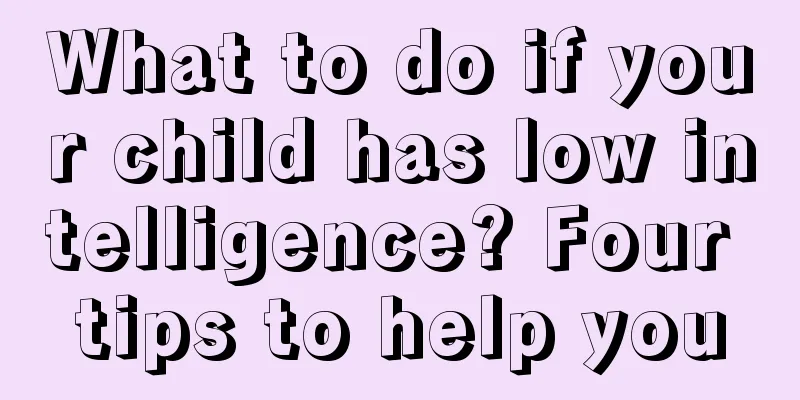Symptoms of congenital heart disease in newborns

|
I don’t know if you have heard of congenital heart disease in newborns. Congenital heart disease in newborns refers to a pediatric disease caused by genetics or any factors that affect the development of the heart embryo during the fetal period, which may cause heart malformations, such as the pregnant mother suffering from rubella. Congenital heart disease in newborns is a serious disease. So do you know the symptoms of congenital heart disease in newborns? Can you explain it to everyone? 1. Non-cyanotic congenital heart disease includes patent ductus arteriosus, ventricular septal defect, atrial septal defect, etc. Children with these diseases usually do not show cyanosis, so it is called "non-cyanotic congenital heart disease"; but children may show cyanosis when they cry violently or suffer from pneumonia, heart failure and late-stage heart disease, so it is also called "latent cyanotic congenital heart disease." The symptoms of children with patent ductus arteriosus are related to the size and thickness of the patent ductus between the pulmonary artery and the aorta and the amount of blood shunt. If the catheter diameter is not large, it may not cause any symptoms, and only a heart murmur may be found during an occasional physical examination. If the diameter of the catheter is large, the child is prone to repeated colds or lung infections, is easily fatigued, sweats a lot, develops slowly, and is pale and thin. At the same time, the heart may be enlarged, the left chest may bulge, and a murmur may be heard and a tremor may be felt between the 1st and 2nd ribs on the left side of the left sternum. 2. Tetralogy of Fallot is the most common cyanotic congenital heart disease. The prominent symptom of the child is the early appearance of cyanosis of the whole body, especially the lips, fingers, toes, earlobes, and oral mucosa. If cyanosis persists for more than 6 months, the fingertips and toes may become thicker and wider (called clubbing), and breathing may become rapid and difficult. In severe cases, there may be an attack of hypoxia, which is manifested by sudden acceleration and deepening of breathing and worsening of cyanosis. If it lasts for a long time, the patient may become unconscious, have convulsions, or even die. Older children become short of breath when walking or moving, and often squat for a while before standing up and walking again. However, examination shows no bulge in the chest and no enlargement of the heart. There may be symptoms such as headache, irritability, anorexia, etc. There may also be vascular embolism phenomena such as hemoptysis and cerebral stroke. If these manifestations occur, it usually indicates that the disease is in the late stage. After reading the above descriptions of the symptoms of congenital heart disease in newborns that we provided to you, you should have some understanding of congenital heart disease in newborns. If you are still not satisfied with the descriptions of the symptoms of congenital heart disease in newborns that we provided to you, you can go to a regular hospital to consult a doctor, or you can search for information on the Internet. I believe you will get a satisfactory answer. |
<<: Infant massage for constipation
>>: Treatment of congenital heart disease in children
Recommend
How to identify ADHD in children?
Many children have been very naughty since childh...
What are the precautions for children swimming?
Because swimming has many benefits for the human ...
What to do if the baby always has eye mucus
Therefore, eye mucus is inevitable, as they are n...
Methods to enhance children's immunity
In fact, people's lives are quite busy nowada...
Symptoms of spinal injury in newborns
We all know that babies are very weak when they a...
What is the daily diet plan for an eight-month-old baby?
Nowadays, parents are very careful in taking care...
What to do if your child loses a tooth and bleeds
It is a common phenomenon for children to start c...
Why does my baby's ears smell?
If your baby's ears have a bad smell, parents...
How to reduce swelling in children's gums
Children are prone to gum swelling and pain durin...
What causes itchy scalp in children?
Many people will have questions about why childre...
Children often do these to prevent myopia
Myopia among children is a very common phenomenon...
What to do if children get rashes due to wind
Children have poor physical resistance, and their...
Why does the baby suddenly wake up while sleeping?
When babies are sleeping, they may suddenly wake ...
Baby nutritious porridge recipe 1 year old_1 year old baby nutritious porridge recipe
When the baby is under one year old, his body fun...
What causes a bump on the back of a baby's head?
In fact, most of the time babies are not yet adap...









